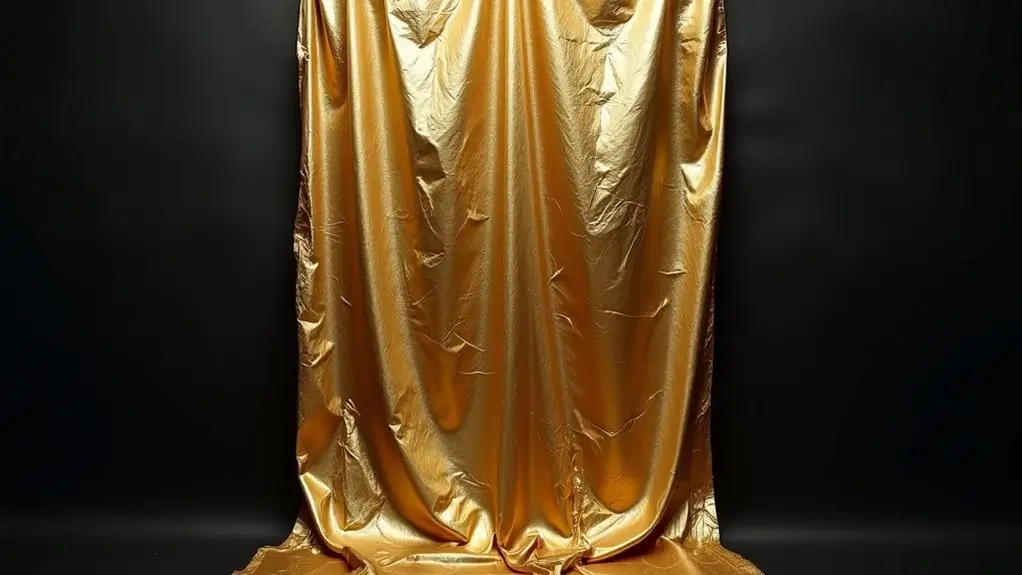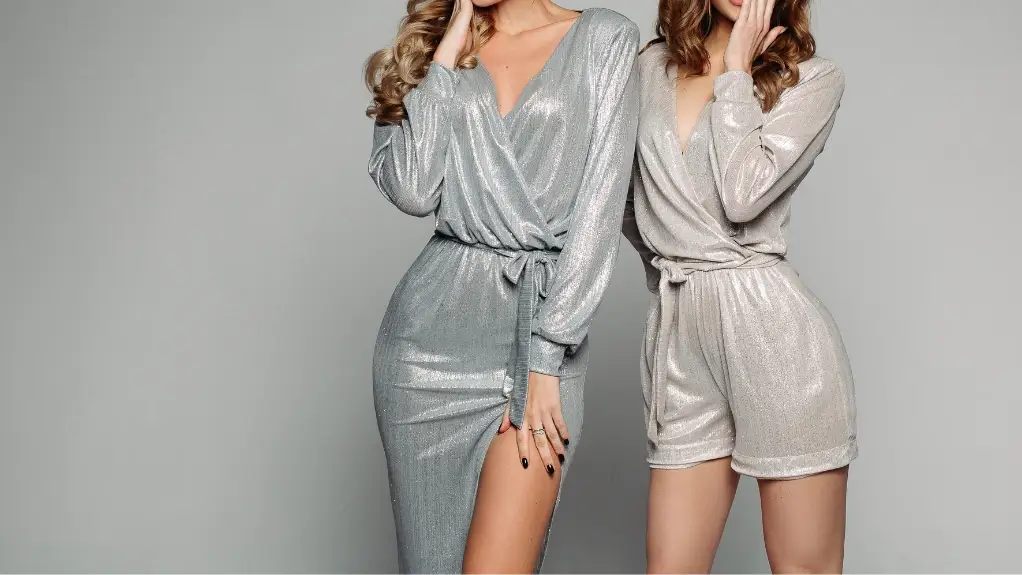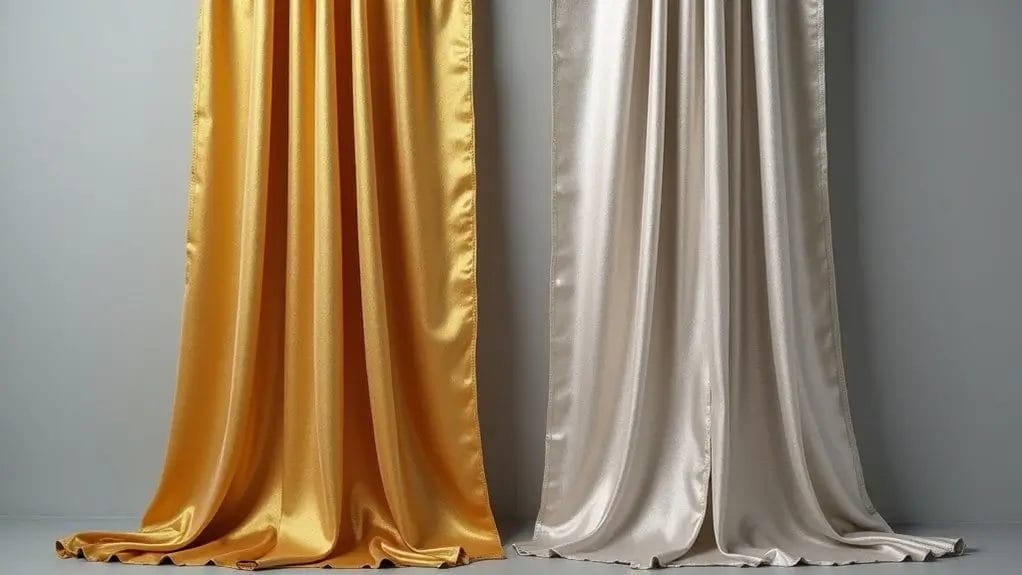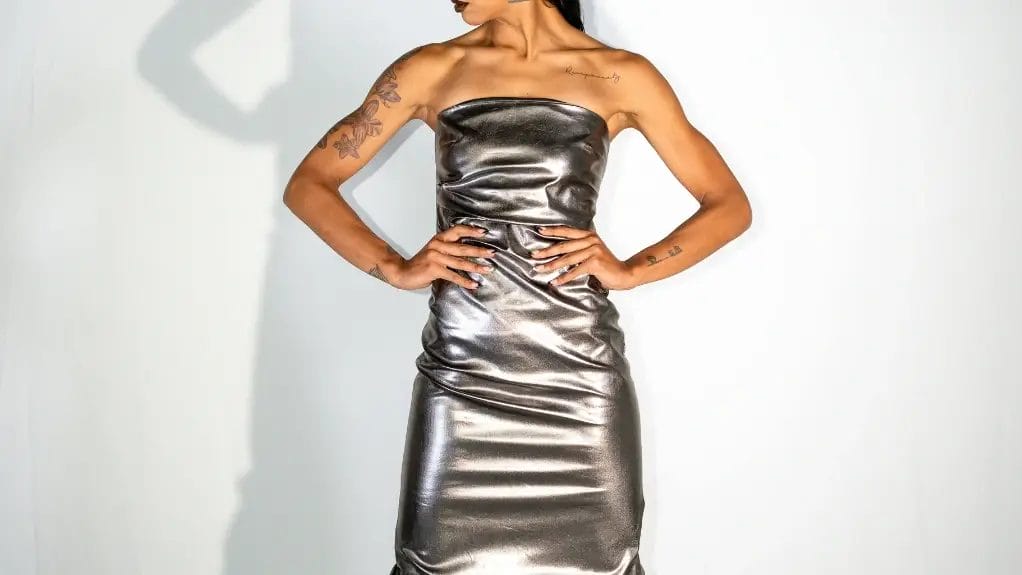While lame fabric dazzles on today’s red carpets and fashion shows, what is lame fabric exactly? Its story goes back thousands of years.
Long ago, ancient civilizations used this shiny fabric as a symbol of wealth and power. Made by weaving metallic threads with silk, lame was a favorite among kings and nobles who wanted to show off their status.
Over time, the way lame is made has changed a lot. What once took careful handwork with real metals can now be made using new techniques and materials. Even so, lame is still loved in fashion and costumes for its eye-catching, shiny look that never fails to stand out.
Key Takeaways
- Lame fabric is made from synthetic fibers and metallic threads. This gives it a shiny, reflective surface.
- It's durable and wrinkle-resistant, but does not breathe well. It's less comfortable in hot conditions.
- Lame fabric is commonly used for evening wear, costumes, accessories, and decorative textiles.
- The fabric needs careful care: hand wash or dry clean, avoid machine washing and bleach, and handle gently to prevent snagging.
- Styling lame fabric works best when paired with simple pieces to highlight its metallic shine.
The History and Evolution of Lame Fabric
While lamé fabric dazzles on today's red carpets, its origins stretch back over 4,000 years to ancient Assyria. It first emerged as a symbol of wealth and power for high social status.
Its history was intertwined with the noble classes, who cherished this "cloth of gold" for its opulent metallic fibers.
The production of lamé has evolved dramatically from its early days. Traditional craftsmen would wrap precious metal around a silk core, creating royalty-worthy garments.
Today's manufacturing techniques make lamé more accessible. But it's still primarily used in high fashion and costume design.
You'll see both genuine metallic threads and synthetic alternatives in modern pieces.
Properties and Characteristics of Lame Fabric

Lamé fabric possesses distinctive properties that set it apart from conventional textiles. This is because of its unique metallic composition.
Modern fabrics blend metallic fibers with synthetic fibers. This creates a lightweight lamé that is more versatile than its historical counterparts.
- Fiber Source: Lame fabric is woven or knit with gold and silver wires wrapped around synthetic fibers like polyester, nylon, or spandex (for added stretch).
- Texture: Due to the metallic threads, it has a smooth or slightly stiff texture.
- Moisture-Wicking: Lame fabric does not wick moisture or breathe well. This makes it less comfortable in hot or humid conditions.
- Strength and Durability: The fabric is strong and durable. This is because of the combination of synthetic fibers and metallic threads.
- Wrinkle Tendency: Lame fabric is typically resistant to wrinkles and holds its shape well.
- Weight: Due to the metallic components, it's generally medium-weight and can be heavier than natural fabrics.
- Appearance: Lame fabric has a distinctive, shiny, metallic luster that gives it a bright, reflective appearance.
Manufacturing Process of Lame Fabric
Modern lamé manufacturing combines traditional weaving techniques with innovative metallic materials to create its signature lustrous finish.
Manufacturers typically start by wrapping synthetic or natural fiber cores with metallic threads or coating them with metallic films.
The manufacturing process varies depending on the type of lamé fabric you're working with.
For high-end garment production, precious metals like gold and silver are carefully woven with silk cores. More affordable options use aluminum-coated synthetic fibers for greater flexibility and durability.
During production, special care instructions are developed to maintain the fabric's shine and minimize environmental impact.
Common Uses and Applications of Lame Fabric

Lamé fabric's distinctive metallic sheen makes it a standout choice for many occasions.
- Evening and Formal Wear: Used in gowns, dresses, suits, and tuxedos to provide a shiny, glamorous look.
- Costumes: Popular in dancewear, stage costumes, and performance outfits due to its eye-catching metallic shine.
- Accessories: Used for making scarves, ties, handbags, and belts that require a metallic finish.
- Decorative Textiles: Applied in upholstery, cushions, and draperies to add a touch of luxury and sparkle.
- Event Decorations: Used for tablecloths, runners, and backdrop fabrics in weddings, parties, and special events.
- Footwear: Occasionally used in shoes or boots for a metallic accent.
- Fashion Details: Incorporated as trims, panels, or accents in various garments to add shine and texture.
Care and Maintenance Guidelines of Lame Fabric

To maintain the lustrous appearance, proper care and cleaning techniques are essential for longevity. Following these specific guidelines will help preserve your stunning lame dress.
- Hand Wash or Dry Clean Only: Lame fabric is delicate. So, hand washing with cold water and mild detergent is preferred. Dry cleaning is often recommended to preserve the metallic threads.
- Avoid Machine Washing: Machine washing can damage the metallic fibers, causing them to break or lose shine.
- Do Not Bleach: Bleach and harsh chemicals can discolor or weaken the fabric.
- Dry Flat: Lay the fabric flat to dry, away from direct heat sources. This will prevent damage and maintain the fabric’s appearance.
- Iron Carefully: To remove wrinkles from lame fabric, ironing is necessary. Use a low heat setting and place a pressing cloth between the iron and the fabric. Doing so will avoid melting or damaging the metallic threads.
- Store Properly: Store lame fabric apparel folded in a cool, dry place. This can avoid creasing and protect from abrasion. Hanging is possible, but avoid heavy items that could stretch the fabric.
- Avoid Excessive Friction: Metallic threads are prone to snagging and fraying easily. So, avoid rough surfaces and be cautious when wearing accessories.
Styling Tips and Design Inspiration for Lame Fabric

Anyone can incorporate metallic fabrics into their wardrobe with the right styling approach.
- Evening Glamour: Use lame fabric to create stunning evening gowns or cocktail dresses that catch the light. Pair with simple accessories to let the fabric shine.
- Statement Pieces: Design bold jackets, blazers, or skirts with lame fabric for a fashion-forward look. Balance with neutral basics to avoid overwhelming the outfit.
- Mix Textures: Combine lame with matte fabrics like velvet, cotton, or wool to create visual contrast and depth in your designs.
- Accents and Details: To add sparkle without overdoing it, use lame as trim, piping, or panels on garments. This works well for collars, cuffs, or waistbands.
- Accessories: Use lame fabric to design bags, belts, scarves, or shoes. These can add a pop of metallic shine that elevates everyday wear.
- Layering: Layer lame fabric pieces over sheer or lightweight fabrics for a modern, textured effect.
- Color Play: Experiment with different metallic shades like gold, silver, bronze, or rose gold.
- Casual Glam: Incorporate lame into casual wear like tops or leggings combined with sneakers for a sporty-chic vibe.
- Event Decor: Use lame fabric in event styling—table runners, chair sashes, or backdrops—to add a festive and luxurious feel.
Final Words: What Is Lame Fabric?
Lame fabric has a rich history and has become a popular choice in modern fashion and design. Its unique gold or silver threads give it a bright, eye-catching look. It's perfect for special occasions and bold styles.
Lame fabric requires careful care to keep its shine and avoid damage. But it adds a touch of luxury and glamour to clothing, accessories, and even home decor.
Whether you want a dazzling evening gown or a standout accessory, lame fabric offers endless possibilities for creative and stylish expression.
Learn more fabric knowledge on the Longan Craft Blog, and dive into the fabric world with Longan Craft!
FAQs
Can Lamé Fabric Be Successfully Blended With Natural Fibers Like Cotton?
Yes, lamé can be successfully blended with cotton and other natural fibers. This creates a more wearable, breathable fabric while maintaining the metallic sheen that makes lamé special.
Does Lamé Fabric Conduct Electricity or Create Static in Dry Conditions?
Lamé fabric can conduct electricity and is prone to static buildup in dry conditions. It's best to use anti-static spray or fabric softener when wearing lamé.
How Does Humidity Affect the Durability of Metallic Threads in Lamé?
High humidity can tarnish and corrode metallic threads in your lamé fabric. To preserve their durability, it's best to store your lamé garments in dry conditions.
Can Lamé Fabric Be Effectively Used for Outdoor Clothing or Accessories?
You shouldn't use lamé for outdoor clothing as it's not weather-resistant. The metallic fibers can tarnish, snag, or deteriorate when exposed to moisture, sun, and rough conditions. It's best for indoor, special occasions.
What Causes Lamé Fabric to Lose Its Metallic Sheen Over Time?
Your lame fabric’s shiny look can fade because of rusting, washing too often, strong chemicals, wear and tear, and getting wet. Improper storage and exposure to sunlight will also dull the metallic fibers.


0 comments